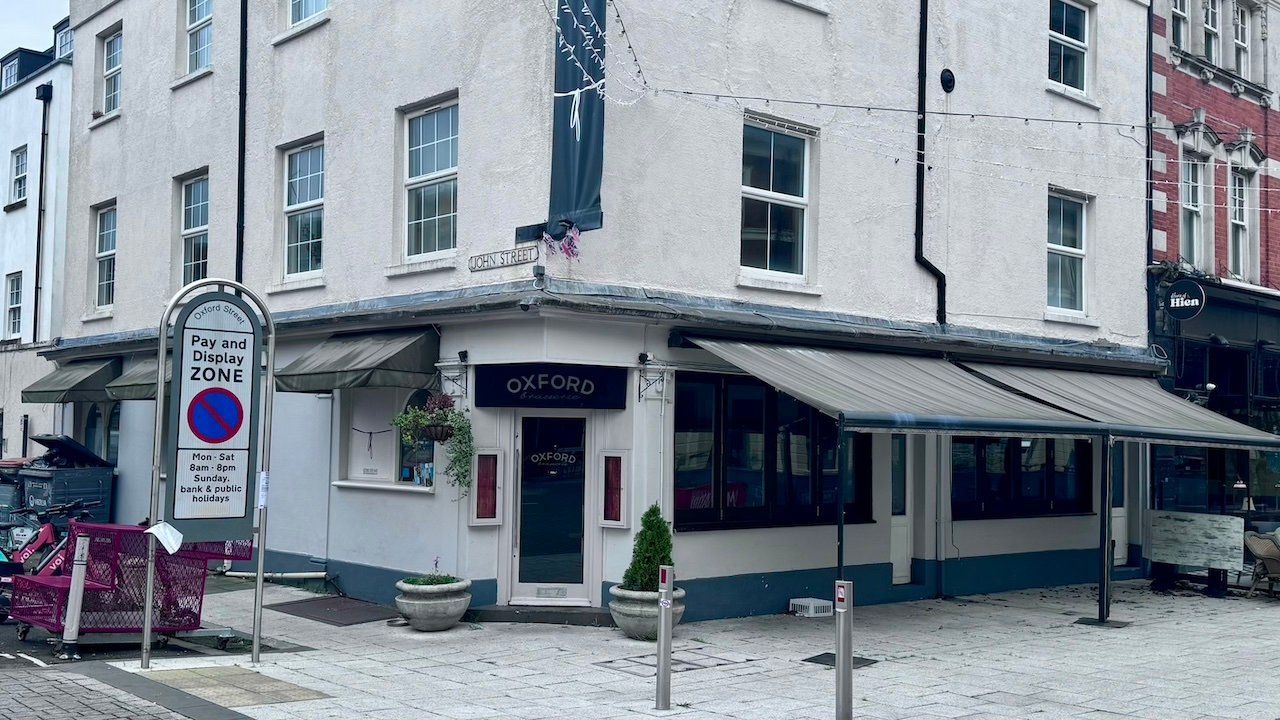Historic Southampton Entertainment District Faces Post-Pandemic Struggles
Oxford Street, once a vibrant hub of Southampton’s nightlife and dining scene, is experiencing a notable decline in foot traffic, raising concerns among local residents and business owners about the area’s future. With concerns about the type of business owners also raised by locals.
During its heyday, Oxford Street stood as Southampton’s crown jewel of nightlife and dining. The historic White Star Tavern anchored this entertainment-rich district near the docks, where the city’s elite would gather for evening entertainment. The area gained particular notoriety when Guy Ritchie was spotted dining at one of its restaruants and was previously a hangout for Southampton FC players due to its upscale atmosphere and prime location. With Kevin Keegan, Paul Scholes and many other visiting the area to eat and drink. The road now seems a far cry from its glory days, but just what has happened?
Recent observations show many restaurants and bars sitting empty on weekends, a stark contrast to the street’s previous bustling atmosphere. Local patrons report that only a handful of establishments – including The Grapes, London, and White Star – maintain steady business, while neighboring venues struggle to attract customers.
“The area has become too generic,” says one local resident who frequently visited the district. “New establishments like Smokin’ Barrels, despite promising craft beer experiences, offer little to differentiate themselves from countless other venues in the city.”
Multiple factors appear to be contributing to the district’s decline. Economic pressures, including rising costs and the ongoing cost-of-living crisis, have forced many residents to cut back on dining and entertainment expenses. Some establishments reportedly charge premium prices, with patrons noting that certain drinks cost more than in London’s upscale Battersea Station. The cost of a Pint of a beer has been reported to be as high as £7.95.
The area’s character has also shifted post-COVID. While Oxford Street traditionally attracts more visitors during summer months, particularly from the cruise ship trade, local commentators suggest the district has lost some of its welcoming atmosphere. Some residents express safety concerns, while others point to a lack of late-license venues pushing nightlife toward Bedford Place and other areas of Southampton. Some women noted they didn’t feel safe walking along Oxford street.
Local residents claim organized crime groups, reportedly of Albanian origin, have acquired ownership of multiple bars and restaurants in the area, allegedly using these establishments for money laundering operations. While these claims remain unverified, they have contributed to a growing perception problem for the district.
The impact on the street’s atmosphere has been particularly concerning for female visitors. “As a girl, I hate going down there in the evenings due to it just not feeling safe,” shared one local resident. “It’s a shame because it’s beautiful and has such lovely history.” This sentiment is echoed by others who frequent Southampton’s nightlife, with many noting an inexplicable but palpable shift in the area’s ambiance. “I couldn’t tell you why but for some reason it gives me the creeps. Whereas I don’t feel like this other places in the city necessarily,” another female observed.
These safety concerns appear to be creating a self-perpetuating cycle: as more women avoid the area, venues become emptier, which in turn makes the street feel more intimidating during evening hours. The transformation is particularly poignant given Oxford Street’s storied past as one of Southampton’s premier entertainment districts, highlighting the delicate balance between preserving a neighborhood’s character and maintaining public safety.
Local authorities and business owners face the challenge of addressing these perceptions and restoring confidence in what was once Southampton’s premier dining and entertainment destination. The situation underscores how quickly a prestigious area’s reputation can change and the importance of maintaining not just the physical infrastructure but also the social fabric that makes an entertainment district thrive.
Lower Bargate, with venues like Coriander, Ottoman Kitchen and Shanghai 1814, has emerged as an busiest destination for those seeking a more upscale dining and drinking experience. Meanwhile, Bedford Place continues to dominate the city’s late-night scene.
The situation reflects broader changes in UK nightlife, with some attributing the shift to evolving youth culture and behavioral changes accelerated by the pandemic. As Southampton’s hospitality sector faces these challenges, the future of this historic entertainment district remains uncertain.
Local business owners and city planners may need to reimagine Oxford Street’s identity to restore its former glory and attract both residents and visitors back to the area. For now, the street’s quiet weekends serve as a reminder of changing times in Britain’s urban entertainment landscapes.

































